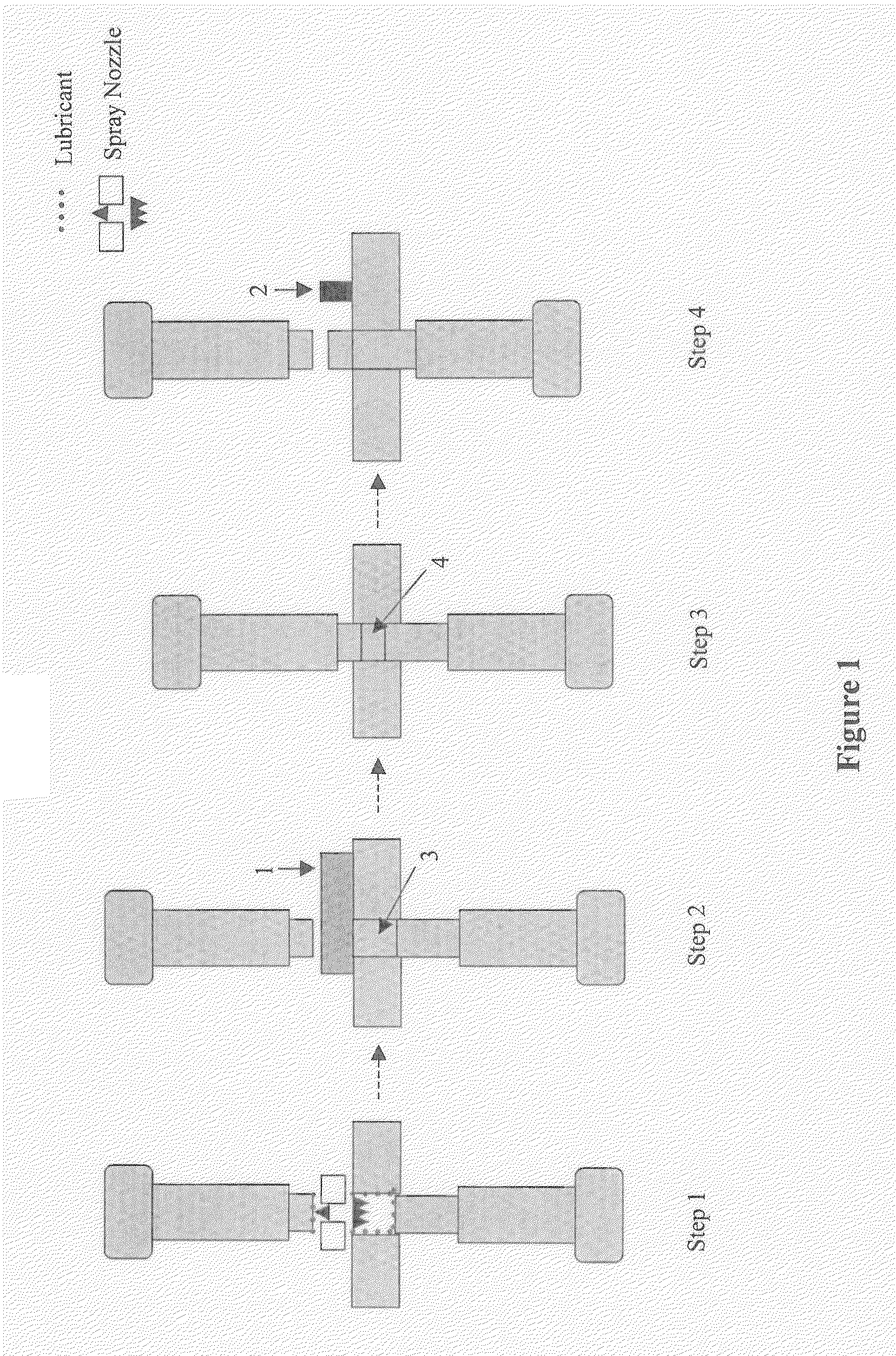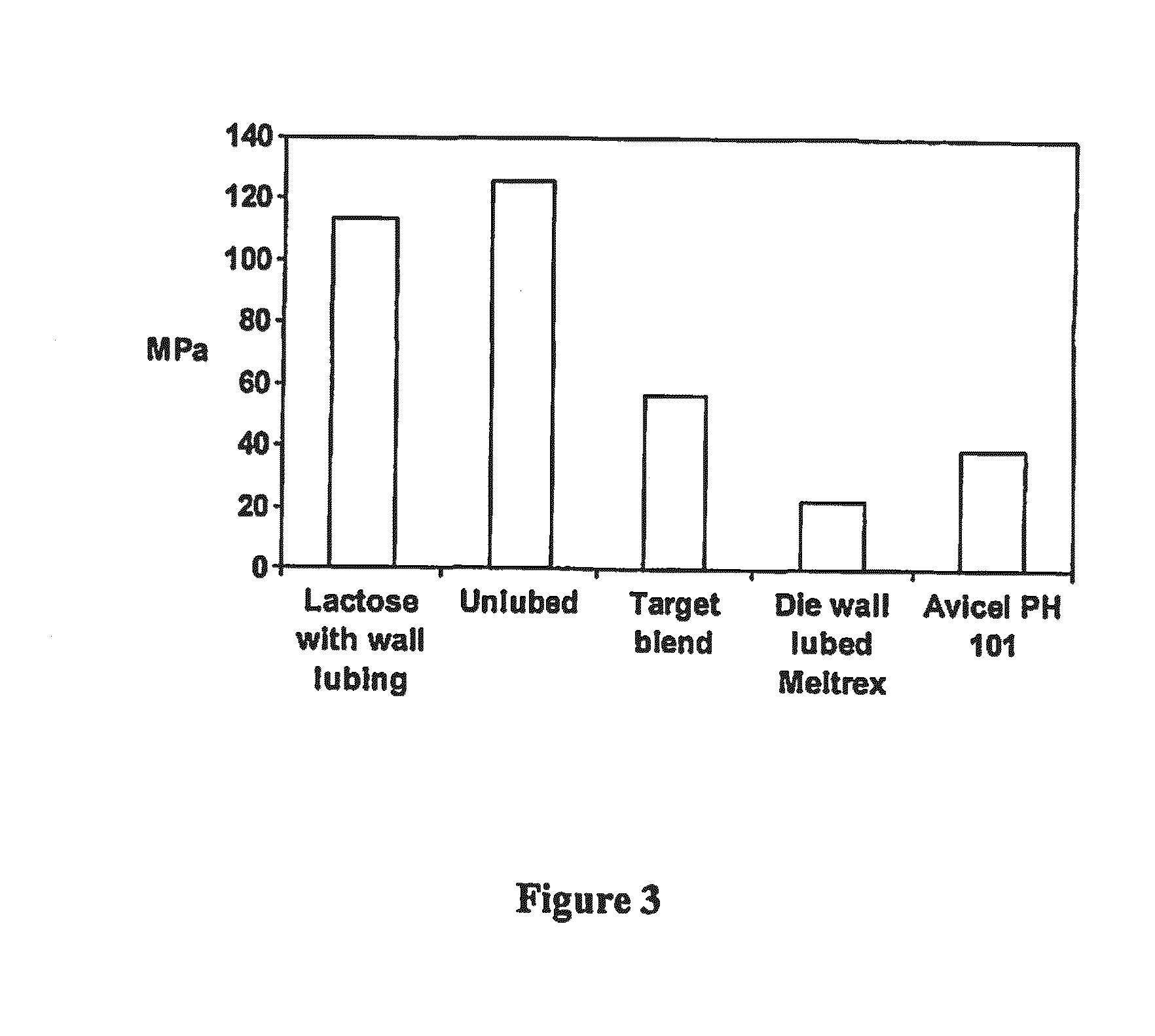Tablets and Preparation Thereof
a technology for tablets and tablets, applied in the field of tablet dosage forms, can solve the problems of delayed dissolution profiles, under-blending and over-blending, and reduced tablet hardness, and achieve the effects of less internal fractures or micro cracks
- Summary
- Abstract
- Description
- Claims
- Application Information
AI Technical Summary
Benefits of technology
Problems solved by technology
Method used
Image
Examples
example 1
[0133]Compression of tablets containing a high percentage of polymeric excipients presents a significant challenge. As demonstrated below, polymers may have significant volume expansion after compaction, leading to the propagation of internal micro-cracks and large shear planes. Polymers can also exhibit high wall friction. Without limiting the present invention to any particular theory, it is postulated that the combination of these effects may lead to structural failure during tablet compression or upon storage.
[0134]When compared to normal excipients used in the manufacture of tablets, polymers exhibit significantly high elastic recovery. XMT images indicated that internal shear failure planes developed inside the polymer-based tablet. Furthermore, with an increase in compression force, the failure planes became aligned perpendicular to the applied force. This realignment of shear failure planes may significantly produce failure in process. Moreover, particle size distribution ca...
example 2
[0159]A lubricant feed rate—ejection force profile, and subsequently a compression force—hardness profile at a constant lubricant feed rate, were recorded. Compared to the process without die wall lubrication, the tablet hardness specification could be met at lower compression forces. The tolerability of the ejection force to slight variations of the lubricant feed rate was acceptable with respect to consistent ejection forces, showing the robustness of the process.
[0160]Lubricant was removed from the pre-tabletting powder blend, and the surfaces of the press chamber were layered with lubricant. These were achieved by using a lubricant spraying system (Fette PKB 2) which provided a constant flow of magnesium stearate, sodium stearyl fumarate or other suitable lubricants. The lubricant was sprayed into the press chamber by means of pressurized air. Afterwards excess material was removed and the press chamber was filled with non-lubricated pre-tabletting powder for compression.
[0161]T...
PUM
| Property | Measurement | Unit |
|---|---|---|
| Tg | aaaaa | aaaaa |
| particle size | aaaaa | aaaaa |
| particle size | aaaaa | aaaaa |
Abstract
Description
Claims
Application Information
 Login to View More
Login to View More - R&D
- Intellectual Property
- Life Sciences
- Materials
- Tech Scout
- Unparalleled Data Quality
- Higher Quality Content
- 60% Fewer Hallucinations
Browse by: Latest US Patents, China's latest patents, Technical Efficacy Thesaurus, Application Domain, Technology Topic, Popular Technical Reports.
© 2025 PatSnap. All rights reserved.Legal|Privacy policy|Modern Slavery Act Transparency Statement|Sitemap|About US| Contact US: help@patsnap.com



